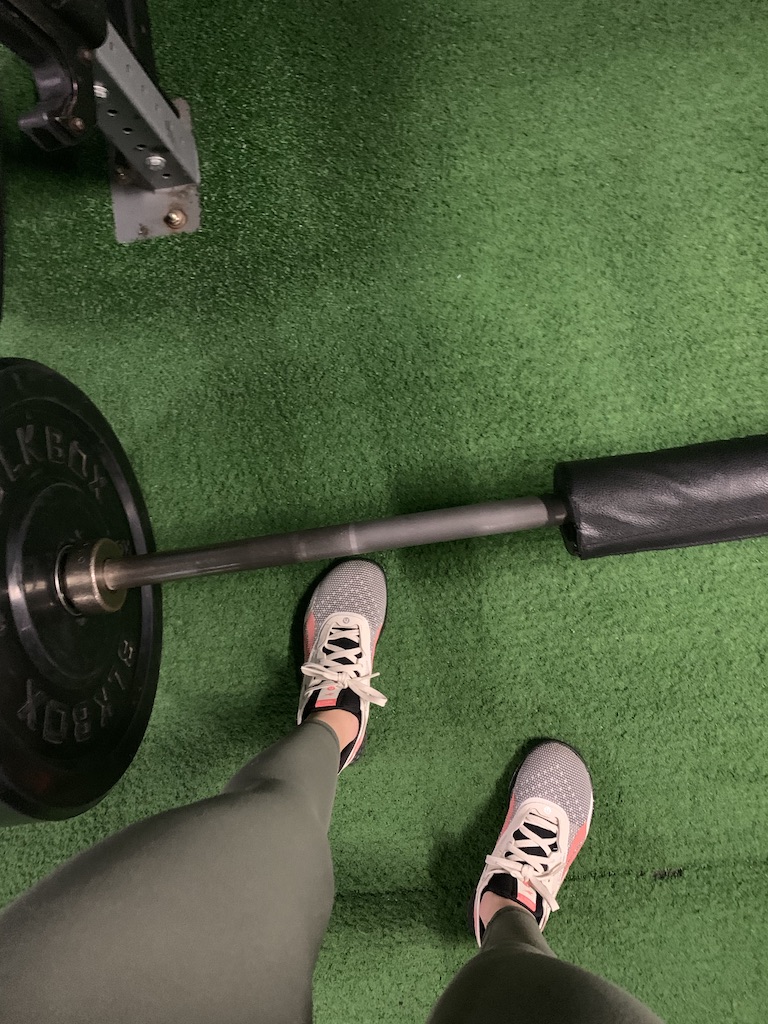This morning routine helps one strength trainer to get up early and work out before work.
When it comes to managing fitness routines, the morning can be make or break. How many times have you turned off your alarm rather than hit the gym? Or failed to pack your workout kit for a lunchtime session when rushing out the door at 8am?
I train three to five days a week, and nine times out of 10 that’s before work. I’m a self-confessed morning person, so I’m often asked how I manage to summon the energy for an early workout and stay alert for the rest of the day. The truth is that training first thing isn’t for everyone, and finding what works best for you is the most important part of a good exercise routine.
But I also think that morning workouts are easier than most people think. It all lies in setting a simple routine that requires as little negotiation as possible. It doesn’t require complicated or fancy rituals, just some basic steps that make mornings easier. Here’s how I do it.
You may also like
Strength training: what is the best time of day to work out?
6am (ish) – Alarm
My alarm goes off anytime between 6 and 7am, depending on how tired I felt the night before, what my workout for the day looks like, and now, how dark it is in the morning (I’m traininglater at the moment due to winter darkness). The real game-changer for my wake up calls has been my Lumie lamp, which I’ve sworn by for about three years. The sunlight clock means that I wake up to daylight rather than darkness, which helps me feel more alert. I stillset a noisy alarm on my phone, too, as I’m not that trusting in my ability to be woken by light alone.

One of my golden rules is to never snooze an alarm. Once you’re out of bed, forgoing the workout – or whatever thing you had planned – seems pointless.
The first thing I do after getting up is take a probiotic supplement. I use Symprove which requires you to avoid food and drink for 10 minutes after to ensure that the bacteria reaches the gut alive – after the wait, I down a lot of water, brush my teeth and throw on my activewear.
6:15am – Pre-workout
The most important part of getting myself to the gym has to be the caffeine. I have a strong coffee with soya milk (my go-to for pre-workout as it contains a little bit of protein to support my training). While I’m not hungry in the morning, I also have a banana as a pre-workout snack.
This is the newest and most important part of my routine, but I’ll admit that it took me a while to get used to eating so early after doing fasted training for years. I introduced it after finding out that fasted exercise can have a negative impact on hormone levels for many women, and I feel so much better in myself since doing so. It’s also benefited my performance: I lift more and feel more focused with some carbs in my system. If opting for something small, fast-digesting and not too offensive – like a banana – is the difference between a good workout and a great one, plus better-regulated hormones, I think it’s worth it.
You may also like
Should you eat before or after you exercise?
6:20am – Walk to the gym
If you can, I’d really encourage you to find your way to the gym in an active way. Not only does it get my brain in gear as I put on a good podcast or playlist, but it loosens my muscles and means that I don’t have to spend time on a cardio machine to get my heart rate up before training.
6:40am – Warm-up
The often-overlooked but crucial step to any workout is a warm-up. In my opinion, it’s never more important than first thing in the morning. Given the fact that I’ve been in bed for (hopefully) eight hours, my joints and muscles need a good wake up call. I try to move through every part of my body, starting with my neck and working my way down to my ankles, paying particular attention to whatever I’m going to be training that day. I focus on mobilising with dynamic movements and muscle activation to prep me for the workout.

6:50am – Strength training
The weight lifting portion of my workouts session takes between 30 minutes to an hour. Regardless of what I’m training, they tend to take the same format: I start with one or two compound lifts, then move on to accessory exercises and supersets.
While that might sound like a lot, the key is not overdoing it. That’s a mistake I see so many people make: training for a long time, at high intensities, then wondering why they’re wiped out for the rest of the day. I’m here for the odd HIIT session every so often, but most of the time I take my morning workouts slow and steady – it’s enough to get me strong and sweaty without being too knackered to get through the rest of the day.
You may also like
HIIT workouts: is doing regular HIIT workouts making you ill?
8:10am – Shower
Because, duh.
8:30am – Breakfast
If breakfast is the most important meal of the day, then a recovery breakfast has to be fit for a queen. Mine tends to be oat-based, as they’re delicious, filling and I can prep them the night before.
I find that overnight oats are way more easily digested as the process of soaking breaks down some of the starch. Plus, oats are a brilliant canvas for nutritious additions: I add protein powder, chia seeds and vegan milk to mine before letting rest overnight, then top with berries and peanut butter. A great re-feed is the key to avoiding a slump after a morning workout – nutrient-dense bowls that hit all three macronutrients to recover from an exerting morning and give me energy for the day ahead.
I unashamedly eat in front of my laptop most mornings, scrolling my inbox or news sites to get a plan for the day. While this might not be advised as the most mindful eating habit, it puts me in a focused headspace for the rest of the day. I start work, and about an hour later, I have my second and last coffee of the day which perks me up until lunchtime.
Images: Chloe Gray
Source: Read Full Article
